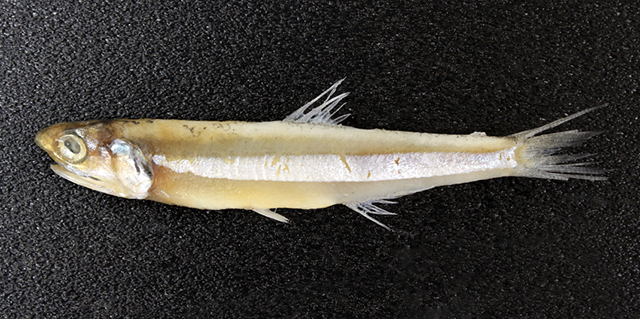| Engraulidae (Anchovies), subfamily: Engraulinae |
| 12 cm SL (male/unsexed); max. reported age: 2 years |
|
reef-associated; brackish; marine; depth range 20 - 50 m, oceanodromous |
| Indo-Pacific: Red Sea and East Africa to northern Madagascar and the Bay of Bengal; southern Japan and northern coast of Australia to the Solomon Islands, New Caledonia, Fiji, Tonga, and Samoa. |
|
Dorsal spines (total): 0-0; Anal spines: 0-0; Anal soft rays: 14-16. Belly rounded with 4 to 6 sharp needle-like pre-pelvic scutes. Maxilla tip pointed, projecting beyond second supra-maxilla and reaching to sub-operculum. Isthmus short, preceded by a small bony plate on urohyal between branchial membranes. Unbranched dorsal and anal fin rays only. Anal fin short. In life, a distinct blue upper edge to its lateral stripe and a dull silver or grey band on flank, the back beige. |
| A schooling species found inshore, but also inhabits deep bays under oceanic influence. Rarely enter mangrove waters (Ref. 43081). Probably feed mainly on planktonic crustaceans (e.g., copepods, Ref. 8591). Eggs are oval, without a knob at one end. Eggs occur intermittently in the lower reaches of mangrove waters (Ref. 43081). Utilized mostly for bait, but also for human consumption as dried fish or fermented sauce (Ref. 9987). |
|
Least Concern (LC); Date assessed: 28 February 2017 Ref. (130435)
|
| harmless |
Source and more info: www.fishbase.org. For personal, classroom, and other internal use only. Not for publication.

